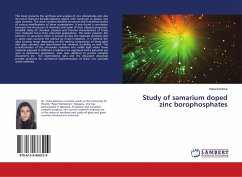The photoresponse-based zinc (II) chemosensors play important roles in several physiological functions in living systems. Due to the unique benefits of photoluminescence imaging, which include high sensitivity and non-invasiveness. It has developed into a potent instrument for the real-time monitoring of Zn2+ trafficking, distribution, and absorption. They have been focused on Zn2+ imaging via photoluminescence in biological systems, which have demonstrated the role of Zn2+ variations in physiological developments. The localization of labile Zn2+ pools as well as the temporal-spatial distribution of labile Zn2+. It has been successful improvements in photoluminescence techniques including fluorescence microscopy and luminescence optical imaging systems.
Bitte wählen Sie Ihr Anliegen aus.
Rechnungen
Retourenschein anfordern
Bestellstatus
Storno








